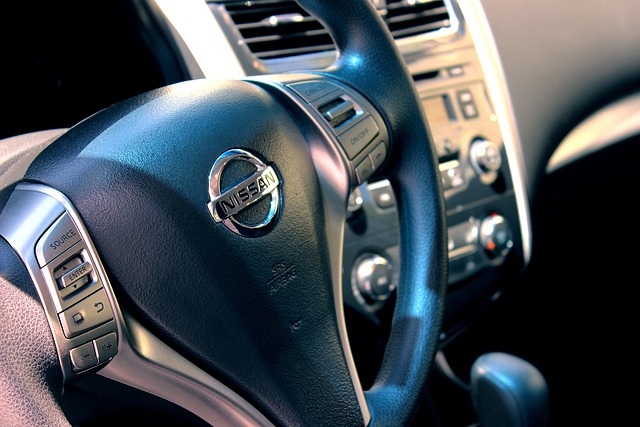Looking to register your car in California? This comprehensive guide will walk you through the process, ensuring a smooth experience. From gathering essential documents to verifying your vehicle’s Identification Number (VIN) using a trusted DMV VIN verifier, we cover everything. First, prepare the required paperwork and confirm your eligibility. Then, visit a California DMV office or use their online system. Complete the registration process with accuracy, and ensure your car is legally registered and ready to hit the road.
- Prepare Required Documents
- Check Eligibility for Car Registration
- Visit a California DMV Office or Use the Online System
- Complete the Registration Process
- Verify Vehicle Identification Number (VIN) with DMV
Prepare Required Documents

Before registering your car in California, make sure to gather all the necessary documents. The process involves verifying the vehicle’s identification number (VIN) as a crucial step. You can use a DMV VIN verifier or opt for a mobile vin inspection to ensure the accuracy of the VIN and other vehicle details. This is essential information required by the California Department of Motor Vehicles (DMV).
Among the documents you’ll need are proof of ownership, typically a bill of sale or a previous registration, and a valid driver’s license. Additionally, have your vehicle’s insurance card handy as it’s another mandatory requirement for registration. A mobile vin verifier can be particularly useful here, as it allows you to quickly check and confirm important specifications while ensuring a smooth registration process at the DMV.
Check Eligibility for Car Registration

Before diving into the registration process, it’s crucial to check your eligibility. In California, you must be a resident or a temporary visitor who owns a vehicle and intends to operate it on public roads to register your car. All vehicles, regardless of age, are subject to registration, with some exceptions for historic or antique cars. One essential step is ensuring your vehicle meets safety and emissions standards, which can typically be verified through a vin inspection.
Utilize the services of a DMV vin verifier or conduct a mobile vin verification to confirm your car’s history and identify any potential issues that could impact registration. This process involves checking the Vehicle Identification Number (VIN) against national databases to ensure it hasn’t been reported stolen, has no outstanding recalls, and meets all necessary regulations.
Visit a California DMV Office or Use the Online System

When registering your car in California, one of the essential steps is verifying your vehicle’s identification number (VIN). You have two convenient options to complete this process: visit a local California Department of Motor Vehicles (DMV) office or utilize the online system. The DMV offers a comprehensive range of services, including VIN verification, which ensures that your vehicle’s information aligns with the records.
Using the online platform is an efficient and popular choice. You can initiate the registration process from the comfort of your home by accessing the official DMV website. Here, you’ll find tools for scheduling appointments, including mobile vin inspection options, if you prefer a more flexible approach. Alternatively, many DMV offices now provide mobile vin verification services, allowing you to get your VIN checked without leaving your current location.
Complete the Registration Process

After gathering all the required documents, it’s time to complete the registration process at a California DMV office or online through the official DMV portal. If you opt for in-person registration, schedule an appointment ahead of time as lines can be long. During your visit, bring proof of insurance, your vehicle’s title (if applicable), and identification documents such as a driver’s license or passport. An important step before registering is to ensure your car’s vin is accurate through a mobile vin verification or using the DMV’s vin verifier tool. This process confirms the identity of your vehicle, which is crucial for legal registration.
For online registration, you’ll need to create an account on the DMV website and follow their digital steps, providing all necessary information and uploading required documents. Keep in mind that certain fees apply throughout the registration process, so be sure to have your payment method ready. Once approved, you will receive your registration documents, including a license plate and registration sticker, which should be displayed on your vehicle for legal driving.
Verify Vehicle Identification Number (VIN) with DMV

Before proceeding with registration, it’s crucial to verify your vehicle’s Vehicle Identification Number (VIN) with the California DMV using a trusted method like a mobile VIN inspection or verifier. This step ensures that the details provided match the official records, including the vehicle’s make, model, and year. Many mobile VIN verification services offer this service, allowing you to confirm essential information about your car from the comfort of your home or even before visiting a DMV office.
Having an accurate VIN is vital for smooth registration as it links your vehicle to its history, ensuring compliance with legal requirements. By using a mobile vin verifier, you can quickly cross-reference the data on hand with what’s on file with the DMV, saving time and effort in the registration process. This simple step ensures that your car’s registration is error-free and up-to-date.
Registering a car in California is a straightforward process that requires gathering essential documents and ensuring your vehicle meets state standards. By following these steps, from preparing required papers to verifying the Vehicle Identification Number (VIN) with the DMV using reliable tools like a dmv VIN verifier, you can efficiently complete the registration and hit the road legally.



